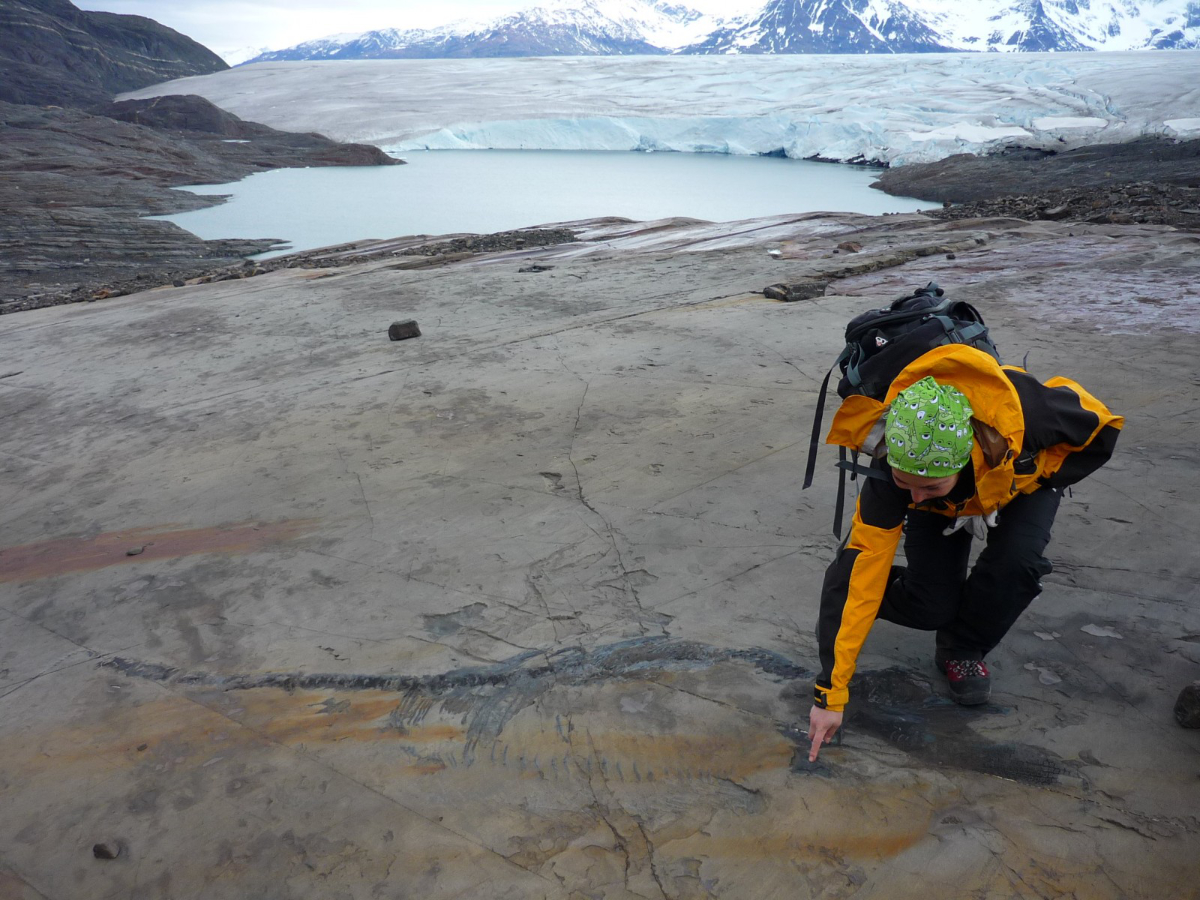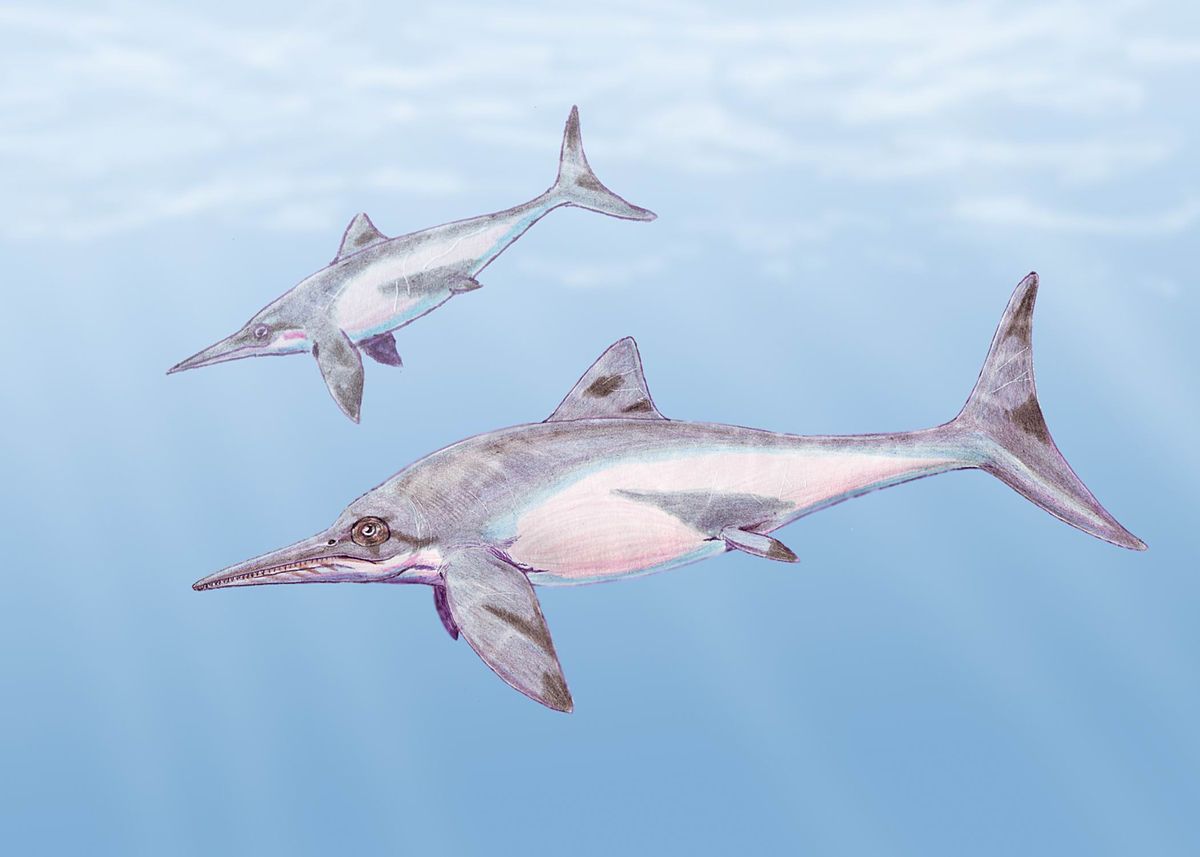Ichthyosaur graveyard points to Noah’s Flood and the Ice Age

The retreat of Tyndall Glacier in the south of Chile has uncovered a spectacular find. Emerging from under the ice is a large graveyard of at least 76 ichthyosaur fossils, including a 4-metre-long female with several embryos.1
Evolutionists believe that ichthyosaurs evolved from land reptiles which became marine. However, the fossil record shows otherwise. No fossil intermediates between any land reptile and ichthyosaurs have been found. Ichthyosaurs first appear in the fossil record fully formed with no evolutionary precursors and with many clear design features for life in the sea.3 These design features include specific eye and ear designs for seeing and hearing under water as well as “a dorsal fin and tail in just the right place and with just the right hydrological design”, as described by evolutionary paleontologist the late Stephen Jay Gould.4
Gould goes on to remark, “The evolution of these forms [the dorsal fin and tail] was all the more remarkable because they evolved from nothing—the ancestral terrestrial reptile had no hump on its back or blade on its tail to act as a precursor” (emphasis added). However, it makes far more sense to believe that these ichthyosaurs did not evolve from land reptiles but were created by God fully formed on Day 5 of Creation Week (Genesis 1:20).
The ichthyosaur fossils in Chile are quite well preserved. If these marine reptiles had died from natural causes and sunk to the bottom of the ocean, they would have been quickly eaten by other animals and broken down by bacteria before they were covered with sediments and fossilized.

So how did these fossils become so well preserved? Judith Pardo-Pérez, one of the researchers who discovered them, hypothesized that at least some were caught in a swiftly flowing current of sediment-filled water and were “buried almost instantaneously in an anoxic environment that prevented bacterial decomposition and kept their skeletons articulated.”2 This hypothesis fits well with what we would expect during the global Flood of Noah’s day. Rapidly flowing currents during the Flood would have eroded and transported huge volumes of suspended sediment. Marine creatures such as ichthyosaurs would have been trapped in these turbulent currents and been buried almost instantaneously as the sediments settled.
Evolutionists believe that the burial and fossilization of these and all other ichthyosaurs found today “occurred millions of years before the glacier appeared”.2 However, there is strong evidence that ichthyosaurs like these were buried recently in the global Flood about 4500 years ago. An ichthyosaur fossil discovered in Germany5 is not only very well preserved, but it contains original soft tissue and proteins. This is clear evidence that this fossil could not be millions of years old, for if it were, all soft tissue would have long since decayed away.
Noah’s Flood not only explains how such fossils formed and why they are so well preserved, it also explains what caused the post-flood Ice Age which formed the Tyndall Glacier over the fossils. As the Flood came to an end, the oceans would have been warm from geological activity, while the land would have been cool. This would have provided the perfect conditions to produce the Ice Age.6
Since the end of the post-Flood Ice Age, the world’s glaciers have more or less been in equilibrium. They advance somewhat during prolonged cold periods (such as the ‘Little Ice Age’, especially in the Northern Hemisphere). They melt back and retreat in warmer periods, such as the Medieval Warm Period (c. AD 950–1250 in the Northern Hemisphere, extending to c. AD 1350 in the Southern Hemisphere). We are currently in a warming trend, causing a general pattern of glacial retreat, including of the Tyndall Glacier, which has now exposed these ichthyosaur fossils.
Conclusion
When we start with God’s Word as an accurate account of Earth’s history, we can make much better sense of new discoveries such as these ichthyosaur fossils than if we start with evolutionary ideas of an old earth and millions of years of biological evolution.
References and notes
- Ichthyosaurs were large marine reptiles that swam in the oceans of the pre-Flood world. Return to text.
- Hansen, K., Melting Glacier Exposes Ichthyosaur Fossils, earthobservatory.nasa.gov, June 3 2022. Return to text.
- Chapman, G., Ichthyosaurs—created to live in the sea, Creation 18(2):14–15, 1996; creation.com/ichthyosaurs-created-to-live-in-the-sea. Return to text.
- Gould, S.J., A Darwinian Paradox, Natural History, p. 40, 1979. Return to text.
- Robinson, P., Soft tissue preservation in a ‘Jurassic’ ichthyosaur, Creation 42(1):36–37, 2020; creation.com/soft-tissue-ichthyosaur. Return to text.
- Oard, M., Ice Age mystery solved! Creation 41(4):44–47, 2019; creation.com/ice-age-model. Return to text.







Readers’ comments
Comments are automatically closed 14 days after publication.